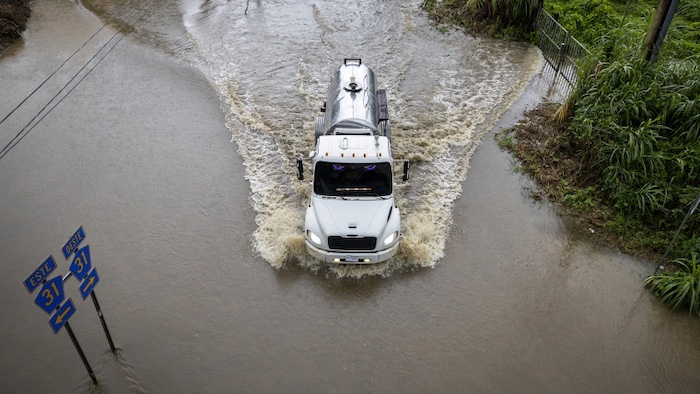Hurricane Erin battered North Carolina’s Outer Banks on Wednesday, unleashing strong winds, heavy waves, and widespread flooding that submerged parts of the main highway and surged beneath beachfront homes. The massive storm, inching closer to the mid-Atlantic coast, is expected to peak on Thursday, with forecasters warning that it could regain strength and return to a major hurricane status, Category 3 or higher.
According to the National Hurricane Center (NHC) in Miami, Erin is not projected to make landfall along the US East Coast but will continue moving north-northeast before veering farther out to sea. However, the storm’s vast size has already caused tropical storm conditions across parts of the Outer Banks and coastal Virginia, with dangerous surf and rip currents forecast from Florida to New England. In Bermuda, residents and tourists have been advised to avoid entering the water as rough seas are expected through Friday.
By Wednesday evening, authorities closed Highway 12 on Hatteras Island after rising storm surges submerged sections of the road, cutting off Ocracoke Island’s connection to its ferry terminal. Officials warned that at peak high tide, large swells could isolate entire villages and homes, while life-threatening rip currents are expected to intensify along the coastline.
Beaches in New York City were closed to swimming on Wednesday and Thursday, while several in New Jersey, Maryland, and Delaware were temporarily shut down due to safety concerns. Forecasters also warned of moderate coastal flooding across low-lying areas of Long Island and parts of New York City, with Massachusetts’ Nantucket Island facing waves of more than 10 feet later this week.
Despite the growing risks, some residents of the Outer Banks appeared unfazed. “I remember taking canoes out of my front yard to get to school, so I don’t think it’s gonna be that bad,” said Jacob Throne, a Hatteras Island resident and surf shop worker. But officials cautioned that Erin’s enormous size makes it especially dangerous.
“Dangerous conditions can be felt far from the eye, especially with a system as large as Erin,” said Will Ray, North Carolina’s emergency management director. The storm has tropical-storm-force winds stretching more than 500 miles — roughly the distance between New York City and Pittsburgh — making it one of the largest hurricanes to threaten the region in recent years.
Emergency officials warned that dozens of beachfront homes already weakened by chronic erosion and collapsing dunes could be at severe risk. “A combination of fierce winds and massive waves, some reaching up to 20 feet, could cause widespread coastal flooding in several communities,” said David Hallac, superintendent of Cape Hatteras National Seashore.
Despite mandatory evacuation orders on Hatteras and Ocracoke Islands, many residents chose to stay behind. “We probably wouldn’t stay if it was coming directly at us,” said Rob Temple, a sailboat cruise operator on Ocracoke Island. His main concern is whether the main highway will wash out, leaving tourists and supply trucks stranded on the low-lying barrier islands, which are becoming increasingly vulnerable to storm surges.
Meanwhile, rescue crews have already been busy as swimmers ignored safety warnings. On Tuesday, lifeguards pulled more than a dozen people from rip currents at Wrightsville Beach, a day after rescuing over 80 swimmers in the same area. Bob Oravec, a forecaster with the National Weather Service, cautioned beachgoers against underestimating the risks. “You can be aware all you want,” he said. “It can still be dangerous.”
As of early Thursday, Erin remained a Category 2 hurricane, with maximum sustained winds of 105 mph (165 kph), located about 200 miles southeast of Cape Hatteras and moving north-northeast at 17 mph (28 kph). The NHC is also tracking two other tropical disturbances in the Atlantic, which could develop into named storms in the coming days. Forecasters warned that warm ocean waters continue to fuel “Cape Verde” hurricanes, some of the most dangerous systems threatening North America.
Faridah Abdulkadiri
Follow us on:








